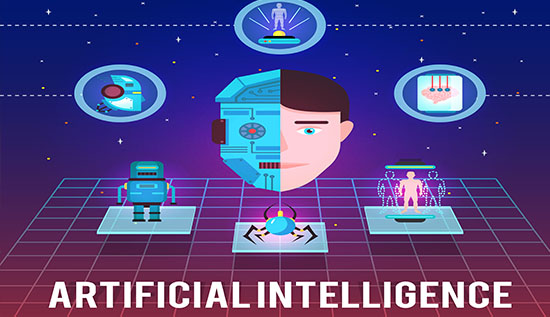Benefits of Serverless Computing

See why businesses are turning to serverless computing for faster deployments, reduced overhead, and seamless scalability.
As cloud technology changes all the time, serverless computing has become a new way of doing things that makes building and deploying apps easier. Businesses and developers are looking for ways to build apps that are faster and cheaper. Serverless computing is one option that looks good. This article talks about the benefits of serverless computing, how it works, some real-life examples, and how platforms like Azure have started to use this model.
What is Serverless Computing?
It's important to know what serverless computing meaning before getting into its benefits. Serverless computing doesn't mean there are no servers, despite what its name suggests. Instead, it refers to a type of cloud computing where the infrastructure is managed automatically by the cloud service. This includes setting up servers, keeping them in good shape, and expanding them as needed. Developers don't have to worry about the hardware underneath, so they can just write code.
The serverless computing architecture is event-driven, which means that code runs in reaction to things like HTTP requests, changes to databases, or message queues. This model works great for microservices, APIs, and short-term jobs that don't need a dedicated server to run all the time.
Core Benefits of Serverless Computing
1. Reduced Operational Complexity
The fact that operating duties are reduced is one of the advantages of serverless computing. There is no longer a need for developers to manually scale their apps, manage servers, or make security patches. Teams can focus more on producing business value with this operational abstraction.
With serverless computing focuses on building functionality of apps without worrying about the infrastructure. Uptime, load balancing, and fault tolerance are all taken care of by the cloud provider. This speeds up the creation process.
2. Automatic Scaling
A big problem with standard server-based models is that they are hard to scale. With serverless, apps can automatically grow or shrink based on user needs. This elasticity provides the best performance at the lowest cost. In the cloud, serverless computing adapts automatically to the number of users, whether there are ten or ten thousand.
3. Cost Efficiency
A pay-as-you-go strategy is often used for serverless computing. You only pay for the time your code runs; you don't pay for computer time that isn't being used. This changes everything for both companies and big businesses because it saves them a lot of money. There's no reason to have too many tools on hand "just in case."
For instance, serverless computing in Azure lets developers use Azure Functions to run functions. This is a tool that only charges users for the time their code runs. This model gets rid of trash and helps people save money.
4. Faster Time to Market
The development process goes much faster because coders don't have to worry about the backend infrastructure. Teams can focus on writing new features and putting out more changes. The serverless computing architecture supports modular development, which lets different teams work on separate parts of the system without being held back by dependencies.
5. Improved Developer Productivity
Developers can spend more time writing code and less time managing things when they give infrastructure jobs to the cloud provider. This makes everyone more productive. Serverless platforms also often work with a number of computer languages and are easy to connect to CI/CD pipelines, which speeds up and improves the reliability of deployment.
Serverless Computing Examples
Let's look at some serverless computing examples to get a sense of what this model means:
- Web Applications: Businesses use serverless functions to handle things like user authentication, backend logic, and database searches without having to keep up with dedicated servers.
- IoT Backends: Devices send data to serverless endpoints, which work quickly to process and keep it.
- Chatbots and Voice Assistants: These apps often use serverless architectures to handle user input, connect to APIs and send back answers in real time.
- Automated Workflows: For instance when a file is uploaded to the cloud, a serverless function can be called to look at it, change its size or move it.
These serverless computing examples show how powerful and flexible this model is in a wide range of fields, from healthcare to e-commerce.
Serverless Computing in Azure
One of the most popular cloud service companies that uses Serverless computing in Azure. In Azure, Azure Functions, Logic Apps, and Event Grid make serverless computing possible. With Azure Functions, developers can run code when certain things happen, like when data changes or when other apps send messages.
Serverless computing in Azure lets companies make event-driven, scalable apps without having to worry about handling the infrastructure. Azure gives you the tools you need to quickly build a RESTful API or integrate data from IoT devices. Furthermore, Azure offers great monitoring and diagnostic tools that help developers keep an eye on their apps.
Serverless Computing in Cloud Environments
AWS (with Lambda) and Google Cloud (with Cloud Functions), two other big cloud platforms, also offer strong serverless computing in the cloud options besides Azure. The goal of all of these services is to let developers deploy code without having to handle servers but each has its own features, pricing, and ways of integrating with other services.
Serverless computing in cloud supports agility, continuous deployment, and microservice architecture, all of which are important for current application development. It doesn't matter which provider you use.
Challenges and Considerations
Even though advantages of serverless computing, it also has some problems:
- Cold Starts: When idle functions are called again after a time of inactivity, they may experience latency.
- Vendor lock-in: Some apps may become reliant on the ecosystem of a single cloud service.
- Debugging and Monitoring: In serverless settings, observability can be harder to handle, so you'll need to learn how to use new tools and methods.
But many of these problems are being fixed as serverless technology keeps getting better.
When to Use Serverless Computing
Serverless computing focuses on building functionality of apps that are very event-driven, have uncertain traffic, or are made up of small, modular services. It works especially well for:
- Very quick modeling
- Applications with varying amounts of work
- Front-end APIs
- Jobs or tasks that run in the background
Serverless computing architecture helps with faster innovation and better resource use by coordinating development efforts with business goals.
Conclusion
The way applications are built, deployed and managed has changed a lot with serverless computing. By taking care of system management automatically and letting applications grow quickly this model lets developers focus on new ideas instead of running the business. With serverless computing in Azure, AWS, or Google Cloud, businesses can get more out of the cloud in terms of efficiency and flexibility.
The advantages of serverless computing are making it widely used across many industries. It can handle large amounts of web traffic and manage complex processes. There are many serverless computing examples that show that this model is not just a fad; it's an important part of current software development.
"No servers" isn't the only thing that serverless computing meaning; it's also about giving developers more power, cutting down on time to market and lowering costs. A serverless computing architecture might be the best thing for businesses that want to stay competitive in a world that is becoming more and more digital.
Read More: The Benefits of Cloud Computing for Cambodian Startups
More Articles
 31 Dec 2025
31 Dec 2025
Generative Engine Optimization (GEO) & AI SEO Guide
Strategies for Generative Engine Optimization (GEO) and AI SEO to boost content visibility, rankings and engagement in AI-powered search results.
 26 Dec 2025
26 Dec 2025
Motion UI Trends 2026: Interactive Design & Examples
Explore the latest Motion UI trends for 2026, including UI animation techniques, interactive web design trends, and real-world motion UI examples that redefine modern digital experiences across web and mobile.
 26 Dec 2025
26 Dec 2025
Conversational UX: Design Tips & Examples for 2026
Conversational UX design strategies, real examples, chatbot and voice UX trends shaping smarter digital experiences in 2026.
 25 Dec 2025
25 Dec 2025
Artificial Intelligence Trends 2026 Shaping the Future
Discover key Artificial Intelligence trends 2026 and how they will transform industries, jobs, healthcare, and enterprise systems worldwide.